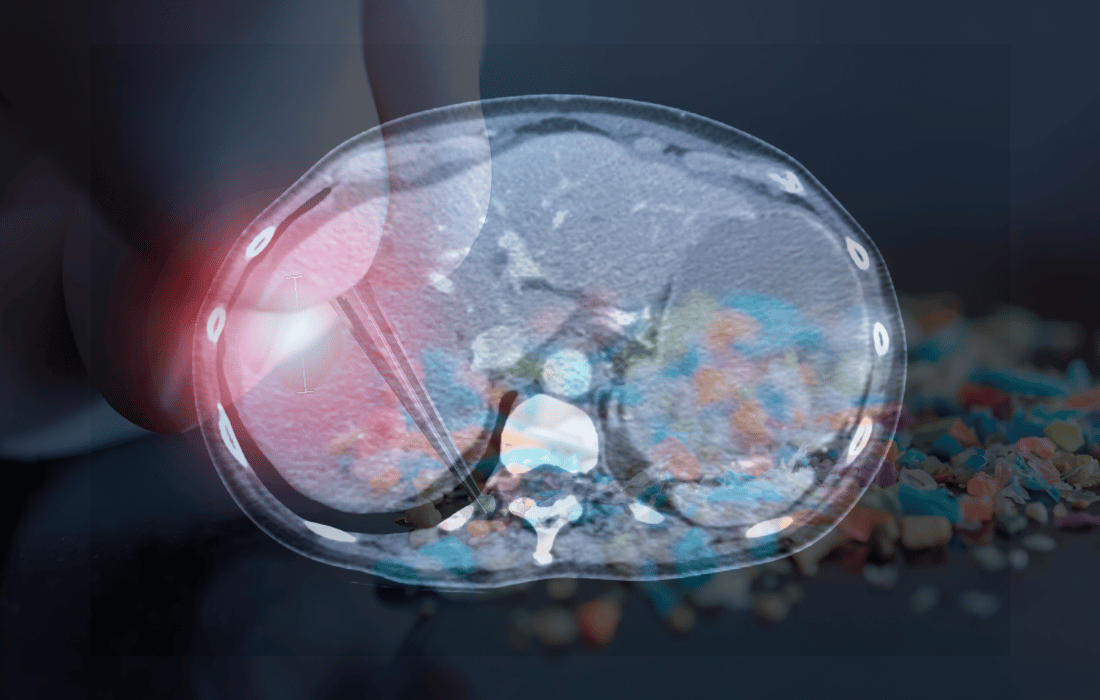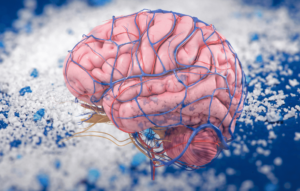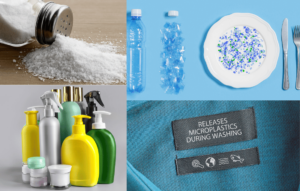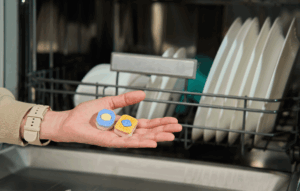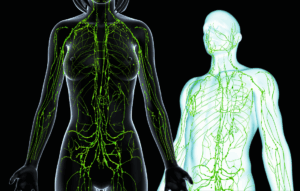Plastic, once revered for its versatility and convenience, has now become a silent adversary, infiltrating not just our environment but our very biological essence. As we’ve honed our skills in plastic production, we’ve inadvertently ushered in an era where plastic pollution, particularly in the form of microplastics (MPs) and nanoplastics (NPs), has become an omnipresent threat. These tiny particles, the byproducts of larger plastic degradation, have infiltrated every corner of our planet, and more alarmingly, our bodies, posing risks to human health that are only now beginning to be understood.
Microplastics and Organ Lesions: An Unavoidable Health Concern
One of the most disturbing revelations from recent research is the direct link between micro(nano)plastics (MNPs) and the formation of lesions in organ tissues. A study published in TrAC Trends in Analytical Chemistry has been pivotal in mapping the distribution of MNPs across various human organ systems, correlating their presence with an array of health issues, particularly tissue lesions. Here’s how MNPs might be contributing to this troubling health scenario:
Inflammatory Bowel Disease (IBD): There’s a significant association between MNPs and IBD, where higher concentrations of these plastics are found in the intestines of affected individuals. MNPs induce oxidative stress, which can alter the gut microbiome, leading to chronic inflammation and subsequently, the formation of lesions. This could suggest that MNPs not only exacerbate existing conditions but might also play a role in initiating inflammatory responses.
Atherosclerosis: MNPs have been detected in atherosclerotic plaques within arteries, contributing to cardiovascular events. The study suggests that these particles promote endothelial dysfunction, a precursor to atherosclerosis, by causing oxidative stress and inflammation, leading to plaque buildup, which can result in lesions or even ruptures within the vascular system.
Thrombosis: The presence of MNPs in thrombi (blood clots) indicates a potential role in blood clotting issues. By possibly stimulating platelet activation or altering blood flow dynamics, MNPs might contribute to the development of thrombi, leading to lesions in the circulatory system where clots form.
Cervical Cancer: While still under investigation, there’s an observed correlation between MNPs and cervical cancer. This might be due to the genotoxic effects of these plastics, potentially causing DNA damage or disrupting cellular processes crucial for preventing cancer, leading to precancerous lesions.
Neurodegenerative Diseases: MNPs have the ability to cross the blood-brain barrier and the gut-brain axis, which could implicate them in neurodegenerative conditions. Mechanisms include mitochondrial dysfunction and inflammatory responses, potentially leading to neuronal lesions and contributing to diseases like Alzheimer’s or Parkinson’s.
This connection between MNPs and lesions poses critical questions about causality: do MNPs directly cause these lesions, or do they merely accumulate in already damaged tissues? The evidence leans towards a scenario where MNPs can both exacerbate existing conditions and potentially initiate new ones through their toxicological effects.
The Pervasive Presence of Microplastics in Human Tissue
Beyond Lesions, MNPs Have Been Detected In:
Respiratory System: Found in lung tissues, sputum, and bronchoalveolar lavage fluid, suggesting inhalation as a significant exposure route.
Digestive System: From saliva through to feces, including liver and gallstones, indicating ingestion as a primary pathway.
Circulatory System: Observed in blood vessels, suggesting systemic distribution.
Reproductive System: Detected in testes, semen, uterus, and placenta, raising concerns about fertility and prenatal development.
Skin and Bone Marrow: Accumulation even via external exposure, potentially affecting immune and skeletal health.
This pervasive invasion confirms that no part of the human body is immune to microplastic contamination.
The Everyday Encounter with Microplastics
Microplastics are not just an environmental hazard; they’re part of our daily consumption, found in drinking water, seafood, salt, produce, air, and cosmetics. We inhale them, eat them, and absorb them through our skin. Their presence in placental tissues raises significant concerns about prenatal exposure, where endocrine-disrupting chemicals from plastics might interfere with fetal development.
The Health Toll of Microplastics
The Implications of MNPs on Health Extend Across Various Bodily Systems:
Brain Health: Their ability to breach the blood-brain barrier could contribute to neurodegenerative diseases by causing oxidative stress and inflammation.
Digestive Health: MNPs disrupt gut flora, potentially leading to gastrointestinal disorders beyond just lesions, like IBD.
Endocrine Disruption: Plastics often harbor chemicals like BPA and phthalates, which can interfere with hormonal regulation, causing reproductive issues, obesity, and thyroid problems.
Reproductive Health: MNPs have been found in human testicles, raising concerns about their potential to disrupt male fertility, hormonal imbalances, and overall reproductive health. This discovery points to a broader impact on the reproductive system.
Cardiovascular Risks: Apart from contributing to lesions like those in atherosclerosis, MNPs are associated with increased risks of heart attacks and strokes.
Fetal and Placental Health: Their passage through the placental barrier suggests potential developmental risks for the fetus.
Circulatory System: They may not only lead to lesions but also contribute to broader circulatory diseases.
Skin and Bone: External exposure can result in microplastic accumulation, potentially leading to skin conditions and affecting bone marrow function.
Mitigating Microplastic Impact with Probiotics: Jigsaw Health’s Essential Blend
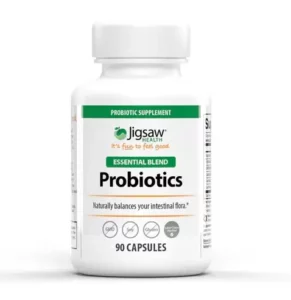
In light of these findings, the role of probiotics in our health strategy becomes even more crucial, particularly products like Jigsaw Health’s Essential Blend Probiotics:
Probiotic Strains: Utilizing five of the most clinically researched strains, including the potent L. acidophilus La-14, this supplement aims to restore and maintain gut health, which could be pivotal in managing or reducing the impact of microplastics. These strains have been studied for their potential to help remove or mitigate the effects of MNPs in the body.
Stability and Potency: Jigsaw ensures that each capsule contains at least 25 billion active bacteria by storing them in refrigerated conditions until shipment. This meticulous care in handling and storage maintains the probiotics’ potency, crucial for their effectiveness in combating the effects of microplastics.
Designed Release: The use of a D.R. Cap (Designed Release Capsule) means the probiotics are delivered directly to the gut, where they are most needed, avoiding premature breakdown in the stomach.
Handling and Storage: To ensure the product’s quality, shipments are scheduled for Monday to Wednesday, reducing exposure to heat. Customers are advised to refrigerate or freeze the product upon receipt, with bulk purchases recommended during cooler months to avoid summer heat.
Cost and Efficacy: At $0.44 per day, it’s an economical choice compared to other high-end probiotics, offering high bacterial counts in just one daily capsule, unlike competitors requiring multiple doses for similar benefits.
Benefits: Beyond aiding in the removal of microplastics, it supports digestive health, enhances nutrient absorption, boosts the immune system, and aids in dairy digestion, all while being free from common allergens and GMOs.
Why This Should Alarm Us All
Microplastic pollution is not just an environmental degradation issue; it’s a burgeoning public health crisis. Universal exposure means we’re all at risk, with especially vulnerable populations like pregnant women, infants, and those with pre-existing conditions facing amplified threats. Long-term accumulation in our tissues could lead to cumulative health damage, including the formation of lesions in various organs.
Addressing the Microplastic Dilemma
While removing MNPs once they’ve entered our bodies is a formidable challenge, here are practical steps to minimize exposure:
Water Filtration: Employ high-quality water purification systems.
Air Purification: Use air purifiers to reduce airborne microplastics.
Probiotic Support: Integrate high-quality probiotics like Jigsaw’s Essential Blend into your regimen to bolster gut health against MNPs. Use code “kyletothemoon to save 10% on Essential Blend Probiotic.
Material Alternatives: Opt for glass or stainless steel over plastic for storage and consumption.
Real Food Focus: Reduce processed food intake to avoid plastic packaging.
Non-Plastic Kitchen Tools: Use alternative materials for cutting boards and utensils.
A Call to Reevaluate Our Plastic Dependency
The emerging evidence linking microplastics to organ lesions and broader health issues demands a reevaluation of our reliance on plastics. As production and pollution continue to escalate, so do the health risks. This situation calls for urgent, collective action from scientists, policymakers, and individuals to prioritize health and environmental sustainability over convenience, advocating for sustainable alternatives to combat this hidden threat.

